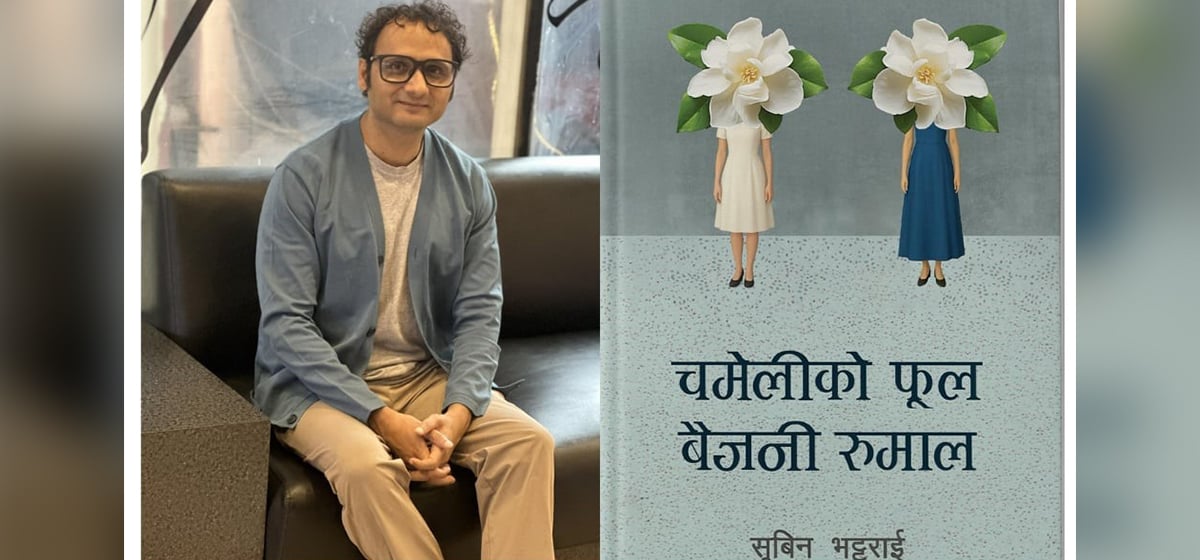But what’s worse the pain or the hangover?
- Kanye West [break]
The New Nepal that has dawned upon us disappoints everybody with its synthesis of depravity and ignorance.
In these dark times of urbanization and self-annihilation, I take refuge in the far and distant coves of literature that we’ve forgotten.
In the old and worn-out copies of Sajha Prakashan, I found the embryo of Nepali Literature. Most of the Nepali literature is political, and burns with a furious rage directed at the mistakes made by men who failed to build this country, and displays frustration against the futility of the efforts of ordinary citizens.
The trend is to write endlessly about ineffectual politics.
The alternative to the endless torrent of politics is Shirishko Phool, a novel by Bishnu Kumari Waiba who goes by the pseudonym of Parijat.
Like little man Maradona, this book is only 60 pages long, but its impact will leave you with a crater in your heart. Every word, line and page of this remarkable novel sings painfully, and its bitter irony will stick with you even long after you’ve finished reading the book.
The strength of the novella is that it’s a literary work with a heart, and its characters are people whom we can easily identify with.
But the thing that sets this book apart as an unparalleled piece of art is its bitter and melancholy narrative, and its forays into the deepest thoughts of the main character which have a universal characteristic.

The main thread of the novel is the mid-life crisis of the narrator of the book, Suyog Bir Singh, a former World War soldier. Suyog lives in a vacuum; that is, in shunya. His life is unremarkable and uncelebrated.
He has no family and no friends and lives a lonely life. He pours out all of his bitterness into alcohol.
He often goes to the bar and finds a younger drinking partner named Shivaraj. He takes Suyog to his home where he meets Sakambari. Suyog soon develops a strong infatuation for Sakambari, a woman 16 years younger than him.
Sakambari is the shirish that the title of the novel alludes to. Just like the flower, she blooms, giving the cold world some warmth.
She’s everything that poor Suyog feels that he has lost in his empty life. Suyog is afflicted by a venomous mixture of strong love for Sakambari and a grim sense of self-hatred.
The foundation of Suyog’s frame of consciousness is shaken to its core by that acrid mixture: he finds love and life to be excruciatingly painful. And in the end, like the flower, due to an unidentified disease, she gives up and withers and vanishes into the earth.
Shirishko Phool isn’t a story of victory; it’s a story about an empty and meaningless life, and a toxic love for a cold woman.
At the crux of the story is Sakambari, a thoroughly bewitching character. The conversations between Suyog and Sakambari, which occur periodically throughout the novel, crack with electricity.
Suyog is a man wounded from fighting himself and the struggle to recognize his existence. Then, Sakambari makes cold and precise comments on Suyog’s life that cut through his frail consciousness.
Like the time she criticizes Suyog’s bachelor life by saying that he is old, and there’s nobody to cook for him.
Sakambari is a strong, independent, and spiteful woman with atheistic attitudes. Her attitude and her caustic criticism show her inner frustrations at being a woman and having a limited role in society.
She resents looking weak in front of her male counterparts like her brother Shivaraj or Suyog.
Suyog, on the other hand, admits to being a lowly mortal and sees Sakambari being stronger than him.
His fascination with her is derived from his admiration of her strong will. But in the end, the reader realizes that Sakambari is as frail as Suyog himself, and her ultimate demise makes a sorrowful ending for a bitter and tortured book.
Of course, Shirishko phool isn’t a novel that is easily stomached by all. Its bitterness may bug you, but its humanity will touch you. The novel is intensely lyrical, and its language is easy to follow.
It is only 60 pages long, but readers will find an entire universe encapsulated in it. In other words, if one can read and write Nepali, then this book is a mandatory reading.
The writer is an A-Level student at Rato Bangala School.
Colors of "Shirishko Phool" : Parijat, BP Koirala and Banira Gi...






































